trans world
2014
From a found collection of slides from 1964, trans world looks at the vacation photograph as iconic history. The photographer of these images is unknown and made many banal and ordinary tourist images, for 1964. 60 years later, the symbolic and stylized images are archetypes of defunct travel operations, tourist attractions, and known/unknown historical monuments.

archival epson inks, found slide
20" x 25"
2014
This image derives its name from the pleasure expressed by Queen Victoria's Ladies-in-Waiting on their visit to Killarney National Park in 1861.
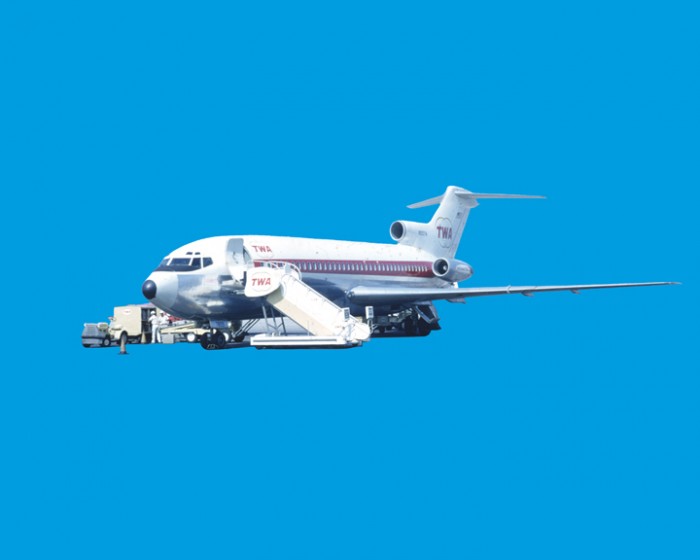
archival epson inks, found slide
20" x 25"
2014
Trans World Airlines was a major American airline from 1925-2001. It was originally named Transcontinental & Western Air and was one of the "big four" airlines formed by the Spoils Conference in 1930, by which the U.S. government gave air mail routes to airlines. TWA expanded into Europe, the Middle East, and Asia after WWII. Since 1970, TWA had financial issues. The Airline Deregulation Act of 1978 led to lower fares and competition. TWA was acquired in a leveraged buyout in 1988 and in 1992 and 1995 underwent Chapter 11 restructuring. In 1996, TWA flight 800 exploded, which further stressed the company with debt. In 2001 TWA filed for a third and final bankruptcy and was acquired by American Airlines.
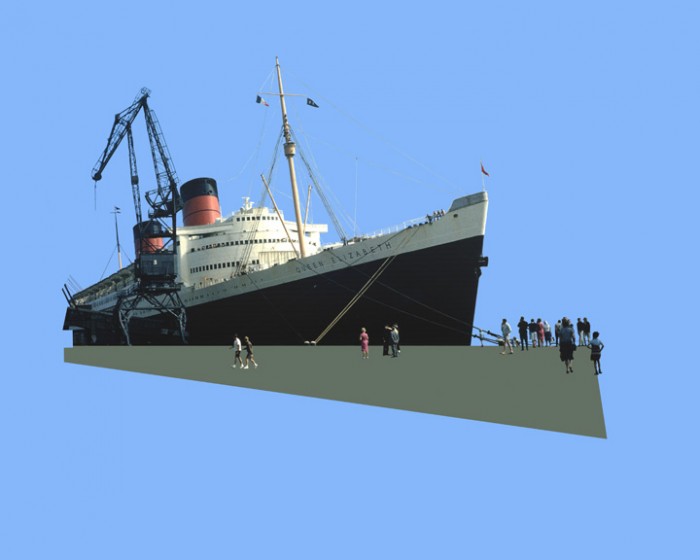
archival epson inks, found slide
20" x 25"
2014
RMS Queen Elizabeth was launched in 1938 and named in honour of Queen Elizabeth, who was then Queen Consort to King George VI and became Queen Mother in 1952. Queen Elizabeth was the largest passenger liner ever built at the time and for fifty-six years thereafter. With her running mate Queen Mary, she provided luxury liner service between Southampton, UK and New York City, USA via Cherbourg, France. She first entered service in February 1940 as a troopship in World War II, and it was not until October 1946 that she served in her intended role as an ocean liner. With decline in the popularity of the transatlantic route, the ships were replaced by Queen Elizabeth 2 in 1969. Queen Elizabeth was sold to a succession of buyers, most of whom had adventurous and unsuccessful plans for her. Finally she was sold to a Hong Kong businessmen Tung Chao Yung who intended to convert her into a floating University cruise ship. In 1972, while undergoing refurbishment in Hong Kong harbour, she caught fire under mysterious circumstances and was capsized by the water used to fight the fire. In 1973, her wreck was deemed an obstruction, and she was partially scrapped where she lay.
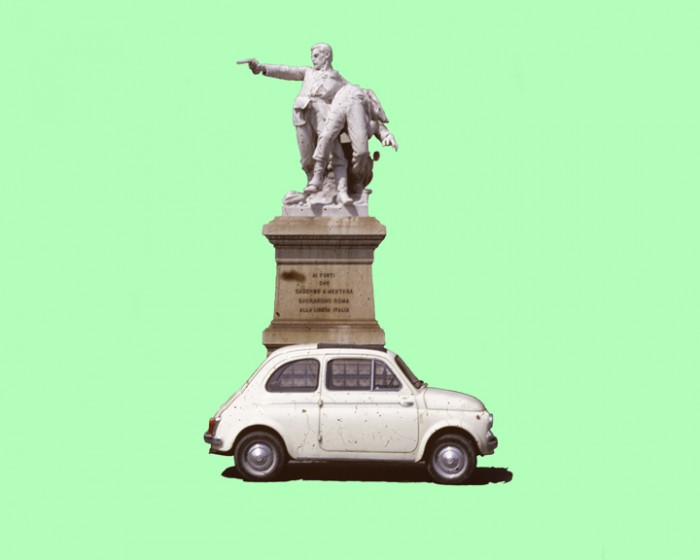
archival epson inks, found slide
20" x 25"
2014
"To the Brave who fell at Mentana, consecrating Rome to Free Italy" to drive tiny cars.
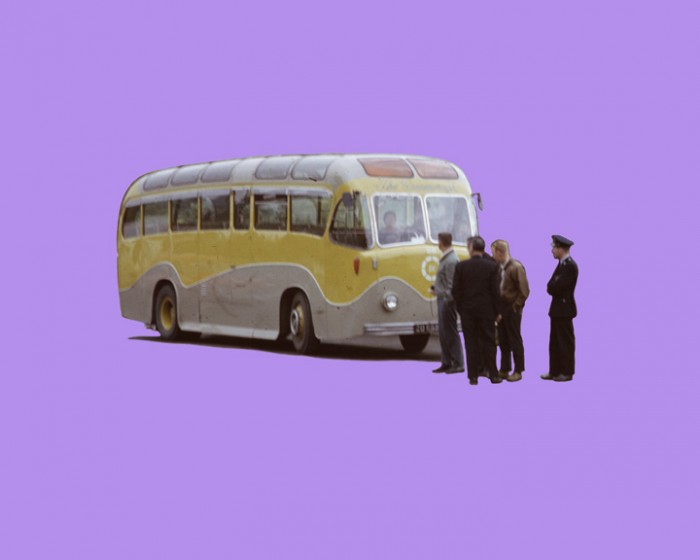
archival epson inks, found slide
20" x 25"
2014
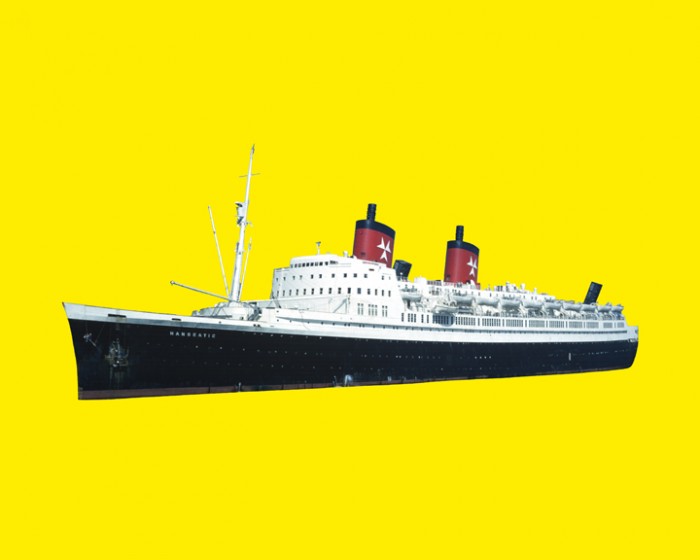
archival epson inks, found slide
20" x 25"
2014
The Hanseatic was built in 1930 and originally name the Empress of Japan. From 1930-1942 it sailed the Vancouver-Yokohama-Kobe-Shanghai-Hong Kong route. During WWII the Empress of Japan was re-fitted for wartime service and after Japan's attacks on Empire outposts in the Far East, the ship was renamed the Empress of Scotland. From 1942-1957, the Empress ran trans-Atlantic routes. In 1958, the Hamburg Atlantic Line bought and radically rebuilt the ship. The ship was renamed SS Hanseatic and carried passengers from Hamburg to New York. In 1966 the ship caught fire in New York which ended its 36 years on the Pacific and Atlantic.

archival epson inks, found slide
20" x 25"
2014
The Tower of Pisa, more accurately referred to as the bell tower or campanile, was built during medieval Europe. Although it was designed to be perfectly vertical, it started to lean during construction. The top of the leaning tower is about 17 feet off the vertical. The tower is also slightly curved from the attempts by various architects to keep it from leaning more or falling over. According to an annual report released by the official surveillance group in charge of monitoring the famously tilting structure, the tower has recovered roughly 2.5 centimeters (almost one inch) of its vertical incline between 2001 and 2013.

archival epson inks, found slide
20" x 25"
2014
Created in 1958 for the Brussels World’s Fair held in Heysel, Brussels, the Atomium Bruxelles is the only structure left standing after the fair. It was designed by André Waterkeyn to be a replica of a single unit of iron crystal blown up 165 billion times. SABAM, Belgium's society for collecting copyrights, has claimed worldwide intellectual property rights on all reproductions of the image via the United States Artists Rights Society (ARS). Ralf Ziegermann remarked on the complicated copyright instructions on Atomium's website specific to "private pictures". The organizers of Belgian heritage, Anno Expo (planning the 50th anniversary celebrations of Expo 58), in the city of Mechelen announced a "cultural guerrilla strike" by asking people to send in their old photographs of the Atomium and requested 100 photoshoppers to paint over the balls. SABAM responded that they would make an exception for 2008 and that people could publish private photographs for one year only on condition they were for non-commercial purposes.